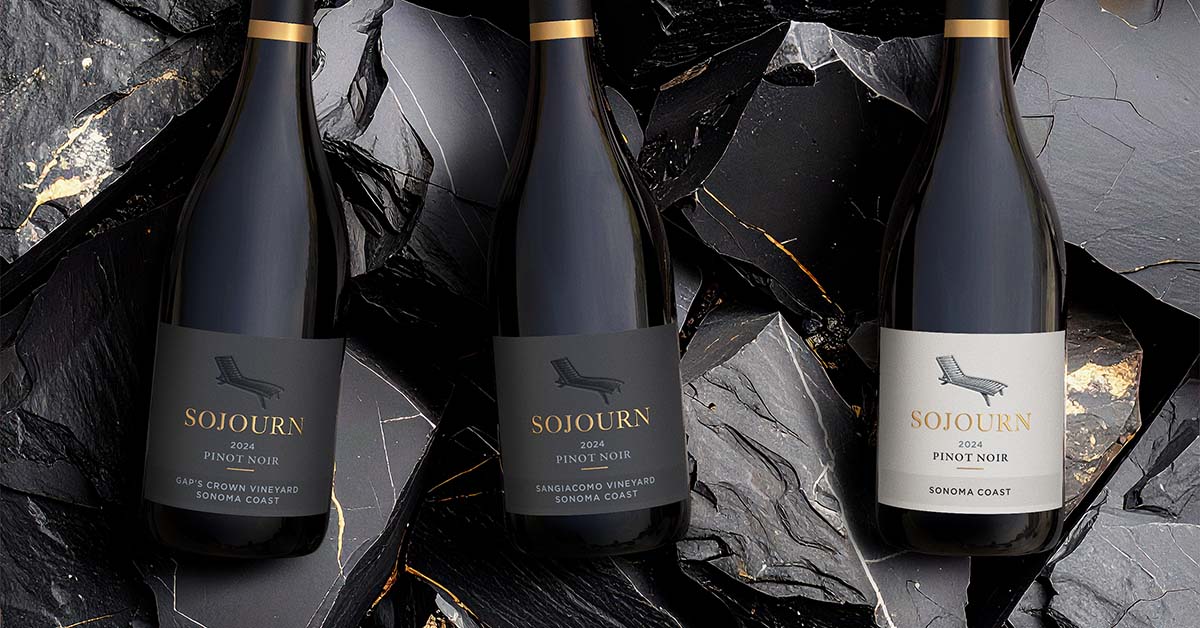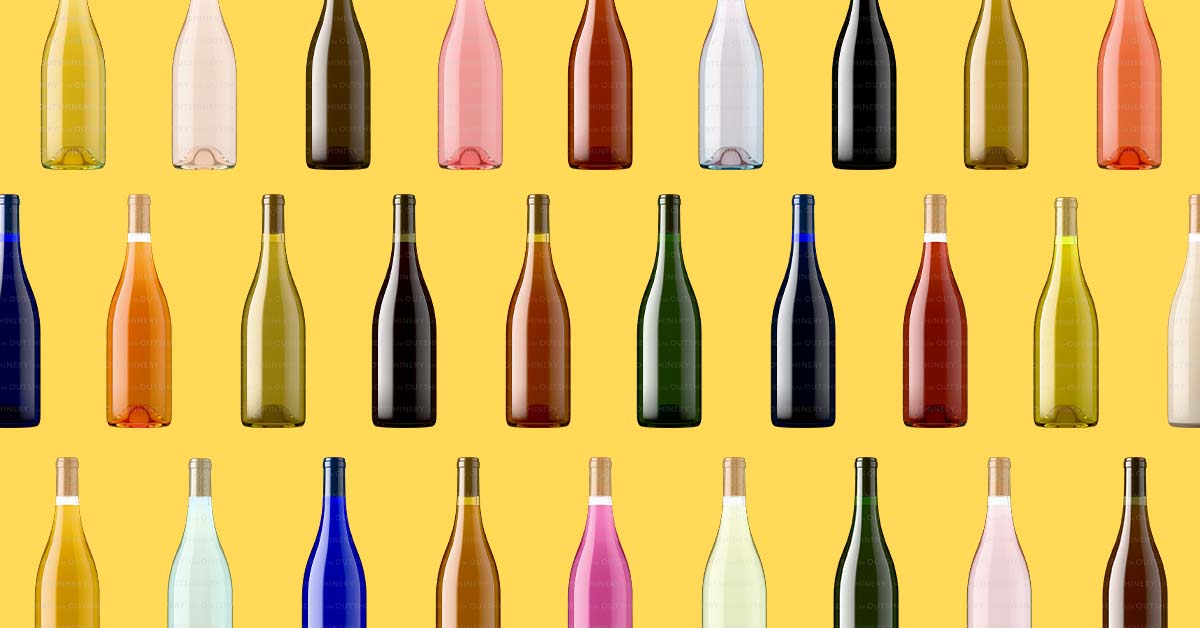Crafting the future: the evolution in cider branding and packaging
Balancing tradition and innovation in a thirsty market

In the dynamic world of cider production, the artistry doesn't end at the orchard's edge. From apple varietals to fermentation processes, each bottle of cider is a testament to the craft and creativity that infuses this age-old beverage. However, beyond the liquid gold itself, there's an equally vital component that commands attention – packaging.
This article dives deep into the heart of cider packaging, exploring the materials, designs, and trends that not only protect and preserve these effervescent creations but also tell a story, attract consumers, and reflect the spirit of innovation that defines the cider industry today.
Summary
- Market trends and packaging preferences: The choice of packaging materials significantly influences consumer appeal and plays a vital role in the cider market's expansion, especially with the increasing preference for cans.
- Evolution and future prospects: The cider industry has seen a significant evolution in packaging and branding, with forecasts predicting the market will grow to $11.40 billion by 2032, driven by innovative branding strategies and diverse flavors.
- Sustainability and design innovations: Emphasizing sustainability and inventive design in cider packaging is paramount. The industry is moving towards more eco-friendly materials and incorporating captivating design elements to stand out.
- Consumer insights and branding strategies: The way packaging is designed profoundly affects consumer perceptions, underlining the importance of balancing traditional appeal with modern innovation in captivating consumers.
Looking at the cider category in 2024 and beyond
Market evolution and expansion
The cider industry is poised for a dynamic evolution, focusing more on local and regional brands while striving for recognition as a distinct category, separate from beer and wine. The American Cider Association highlights cider's enduring popularity and its consistent growth, especially among local and regional brands.
This trend is anticipated to persist as consumers increasingly seek out craft producers and the diverse styles and flavors they offer.
The global cider market is poised for substantial growth, driven by its increasing popularity as a beer or malt beverage alternative, and the soaring interest in premium and artisanal varieties. The rising demand for low-alcohol and gluten-free alternatives is significantly boosting cider's prominence on the international stage.

The evolving landscape of cider
In an era where differentiation and brand identity are paramount, the cider industry finds itself at a crucial juncture. With the landscape evolving rapidly, both in terms of consumer preferences and global market dynamics, it is imperative for cider brands to innovate continually.

European-style ciders gain popularity
European-style ciders, comparable to fine wines, are captivating wine enthusiasts, marking a significant trend in the alcoholic beverage sector. Offering a refined alternative to the typically sweet, mass-produced American ciders, these ciders introduce consumers to the intricate world of artisanal cider through the pivotal experience of the tasting room. Here, the essence of the cider and its backstory come to life, enriching the consumer's appreciation.
Craft cider appeals to modern consumers
The cider market is responding to a surge in demand for offerings that are gluten-free, locally produced, seasonal, and cater to health-conscious individuals. Craft cider, embodying these qualities, is becoming increasingly popular among consumers looking for beverages that align with their lifestyle and values. This trend is part of the broader craft beverage movement, which emphasizes artisanal qualities, local sourcing, and unique flavors.

The growing interest in traditional production methods
The Ancestral Method, which allows for the fermentation of cider directly in bottles and retains some of the apple's natural sugars without the addition of anti-yeast agents or the use of pasteurization, is increasingly gaining favor among cidermakers. They are exploring its capabilities to produce effervescent ciders with a distinct character.

The growing popularity of hard cider
Hard cider is distinguished by its higher alcohol content than regular cider, . In the United States, the descriptor "hard cider" differentiates it from the non-alcoholic version, often referred to as "sweet cider."
The burgeoning popularity of hard cider can be attributed to several factors. It notably resonates with the younger crowd, who prefer it over traditional alcoholic beverages due to its superior quality and the benefit of being gluten-free. Additionally, hard cider's rich antioxidant and vitamin C profile renders it a healthier alternative within the realm of alcoholic drinks.
Moreover, the craft cider movement, drawing inspiration from the craft beer revolution, has played a pivotal role in elevating cider's status in the U.S. market. This trend has captivated consumers seeking artisanal, locally-produced beverages that offer unique and nuanced flavors.

The evolving cider industry
The cider industry is dynamically evolving, adapting to changing consumer preferences with a focus on sustainability, health, and distinctiveness. Innovations include European-style ciders, gluten-free options, and seasonal varieties, all of which are steering the cider market towards growth. This evolution reflects a broader shift towards products that offer a unique drinking experience, combined with health and environmental benefits.

The evolution of cider packaging and branding
The evolution of cider packaging and branding has been driven by the growing popularity of craft cider and the desire for unique, artisanal products. Traditional cider packaging often featured apples, orchards, trees, or a combination thereof, contributing to the perception of cider as a sweet beverage. However, modern cider packaging has evolved to incorporate new, eccentric flavors and ingredients, such as mint, jalapeno, basil, elderberry, and cherry, which provide more space for creative design and differentiation.

Shifting design aesthetics
The shift towards more gender-neutral and outdoorsy design aesthetics has also been observed, as cider gains popularity among both younger women and men. The packaging of craft cider has become increasingly important, as consumers seek quality, transparency, and a compelling brand story.
Craft cider brands are expected to communicate the origin of their ingredients, the uniqueness of their products, and the story behind their creation, similar to craft beer packaging.

Packaging formats and market impact
The different types of packaging used for cider include a variety of materials and formats tailored to the specific needs of different types of beverages. Some common packaging options for cider are:
- Glass bottles: Glass bottles are a traditional packaging choice for cider, often associated with premium quality and perceived cleanliness. They are commonly used for traditional ciders and are available in various sizes like 750ml, 500ml, and 375ml.
- PET bottles: PET bottles are another popular choice for cider packaging, offering advantages like lightweight, durability, and convenience. They are used for both disposable and returnable products, with returnable PET bottles having a thicker wall than disposable ones.
- Cans: Cans have surged in popularity within the cider industry, favored for their convenience, portability, and ties to the craft beer movement. Their adaptability for inventive and striking designs makes them the go-to packaging option for contemporary cider brands. This trend towards canned cider has significantly propelled market expansion, with this segment covering 34% of the market share and generating revenue of $2.38 billion in 2022.
The choice of packaging in the cider industry, from glass bottles to PET bottles and cans, plays a key role in consumer attraction and market trends. It influences cider's perception as a versatile drink, catering to different market segments and reflecting the craft cider movement's dynamism. Strategic packaging choices, emphasizing design, functionality, and sustainability, are crucial for growth in the competitive beverage market.

Conclusion and future outlook of the cider segment
In conclusion, the evolution of cider packaging and branding reflects the industry's response to the growing demand for craft, flavored, and premium ciders. The rise of cans, gender-neutral, and outdoorsy designs are key trends, with the cider market expected to expand to $11.40 billion by 2032.
To thrive, cider brands must prioritize innovative branding, diverse flavors, and health-conscious options, adapting to the dynamic market landscape.

Frequently Asked Questions (FAQ)
What makes cider packaging unique compared to other beverages?
Cider packaging stands out because it often reflects the beverage’s apple variety diversity and craft production process. Designers leverage creative visuals, tactile materials, and innovative forms to narrate the brand's story, making each bottle not just a container, but a piece of art that speaks to the cider’s heritage and quality.
How important is sustainability in cider packaging?
Sustainability is increasingly becoming a priority in cider packaging design. Forward-thinking brands are adopting eco-friendly materials and processes, recognizing that consumers value environmentally conscious choices. This commitment to sustainability not only appeals to a broader audience but also aligns with global efforts to reduce ecological footprints.
Can the packaging influence the flavor perception of cider?
Absolutely. While packaging doesn’t change the physical flavor profile, it significantly influences the consumer's perception and enjoyment. Elegant, thoughtfully designed packaging can enhance the anticipation and overall tasting experience, making the cider seem more premium or unique.
Are there any trends in cider packaging design?
Current trends include the use of bold, distinctive designs that tell a story, the incorporation of interactive elements like QR codes linking to virtual experiences, and a strong emphasis on sustainability. These trends reflect a broader shift towards packaging that engages, informs, and resonates with consumers on multiple levels.
How do cider brands balance tradition and innovation in packaging?
Many cider brands pay homage to their heritage through classic design elements, while infusing modern touches or technologies to stand out in the market. This balance of tradition and innovation is key to attracting both purists and newer audiences who value creativity and sustainability.
How to best photograph cider bottles and cans?
Capturing the essence of cider in photography demands an eye for detail and an understanding of lighting to showcase its uniqueness, focusing on clarity, color, and design. Outshinery specializes in creating flawless, digital imagery and animations for cider brands, offering tailored visuals that highlight each brand's unique story through advanced digital rendering. This approach solves traditional photography's logistical challenges, allowing for creative freedom and innovative product presentation, aligning with marketing strategies. Outshinery's services provide visuals that epitomize excellence and engage consumers with the allure of quality cider.










































